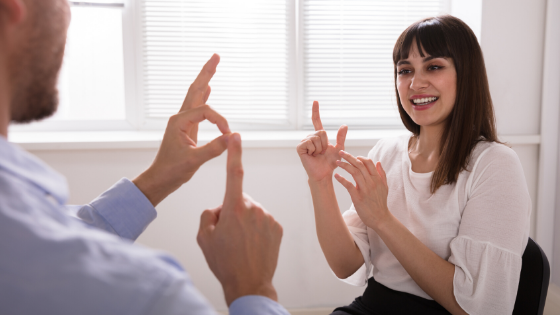
Vogler thinks researchers should move away from the idea that sign language recognition devices can really meet in-person communication needs. But, despite not necessitating a glove, the device likely has the same pitfalls of any previous system, since it doesn’t capture face and body movements. Vogler says it’s a positive that the MSU technology is using deep learning methods, which have had success with spoken language. "That will be the next significant milestone for us to reach," he says. He says his team hopes to extend DeepASL's capabilities in the future to capture facial expressions as well. Zhang emphasizes that DeepASL is designed to enable only basic communication at this point, and that this is just a starting place. Zhang's team did not test the device on people who were deaf and hard of hearing, but on students in a sign language translation program. So far, “none of the systems have been even remotely useful to people who sign,” Vogler says, adding that researchers often seem to have “very little contact with the community and very little idea of their real needs.”
Deaf translator full#
While DeepASL translates full sentences, some features of ASL grammar go beyond hand signs-facial expressions are often used as modifiers, eyebrow raising can turn a phrase into a question, body positioning can indicate when the ASL user is quoting someone else. This means key grammatical information is lost, information about whether a phrase is a question, a negation, a relative clause and so forth. Researchers Biyi Fang and Mi Zhang demonstrate DeepASL.īut Christian Vogler, a professor of communication studies at Gallaudet University, a university for people who are deaf or hard of hearing, is skeptical of devices designed to translate ASL, and his skepticism is shared by many in the Deaf community.ĭevices generally do not truly ‘translate’ ASL, merely recognize hand signs and turn them into an English word per sign, Vogler says. Because it’s based on affordable technology-the Leap Motion motion capture system retails for $78-it could be more widely accessible than previous efforts. Zhang has applied for a patent and hopes to have a device on the market within a year. DeepASL could serve as a digital tutor, giving feedback on whether learners are signing correctly. Since more than 90 percent of deaf children are born to parents who are hearing, there is a large community of adults who need to learn ASL quickly. The device, which could be integrated with a phone, tablet or computer, can also help teach ASL, Zhang says. It could be especially useful in emergency situations, Zhang says, when waiting for a translator could cost precious minutes. Zhang and his team hope DeepASL can help people who are deaf and hard of hearing by serving as a real-time translator. “This is a truly non-intrusive technology,” says Mi Zhang, a professor of electrical and computer engineering who lead the research. Unlike many previous devices, DeepASL can translate whole sentences rather than single words, and doesn’t require users to pause between signs. The technology, called DeepASL, uses a camera device to capture hand motions, then feeds the data through a deep learning algorithm, which matches it to signs of ASL. Now, a group of researchers at Michigan State University (MSU) has developed a glove-less device the size of a tube of Chapstick they hope will improve ASL-English translation. Many of these technologies use gloves to capture the motion of signing, which can be bulky and awkward. The Associated Press contributed to this report.Over the past several decades, researchers have regularly developed devices meant to translate American Sign Language (ASL) to English, with the hopes of easing communication between people who are deaf and hard of hearing and the hearing world. South African government minister Hendrietta Bogopane-Zulu said in a press conference last week that most qualified sign language interpreters charge $125 to $165 per hour and speculated that a junior official might have opted for the cheapest quote.īoth the ANC and the South African government said they are looking into their hiring process following the furor. Jantjie said he was paid a $85 daily fee for appearing at the Mandela memorial.

An invoice seen by NBC News suggested that the ANC employed Jantjie on at least one more occasion, in June this year. "100 percent of the information was omitted," said the complaint, seen by NBC News.ĪNC spokesman Jackson Mthembu said last week he has no knowledge of the complaint ever being made. 2012 which said Jantjie's sign language for a speech by South African President Jacob Zuma at the party's centenary celebrations was "self-invented" and "a mockery."

The organization sent the ANC a formal letter of complaint in Jan.


 0 kommentar(er)
0 kommentar(er)
